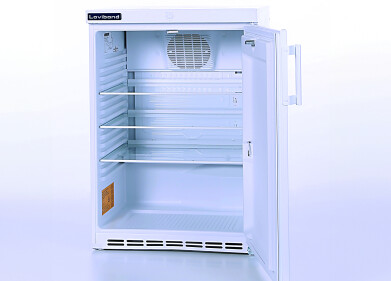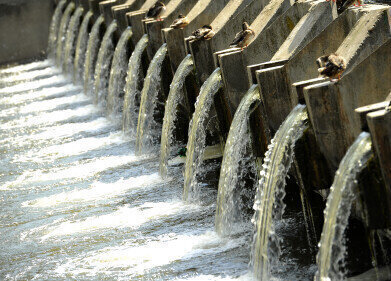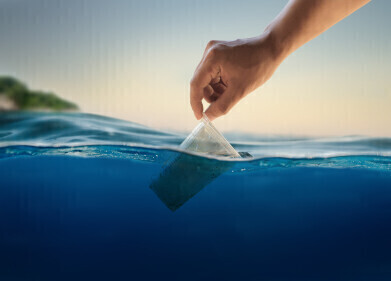Drinking water
Water Quality in Thailand
Apr 28 2023
Water quality is a significant concern in Thailand, where surface water sources are often polluted due to improper drainage from households, tourist attractions, industrial areas, and agricultural areas. According to a report in 2021, 44% of surface water sources in Thailand had a fair water quality, while only 2% were in very good condition. The major sources of pollution are domestic sewage, industrial waste, and agricultural waste. Major water quality problems in Thailand's rivers are dissolved oxygen depletion, fish kills, high ammonia nitrogen, high coliform bacteria, and eutrophication phenomena. Approximately 43 million people in Thailand drink contaminated water, which can cause diseases like diarrhoea, typhoid, and dysentery.
Population growth and economic, agricultural, and industrial expansion are major causes of water quality deterioration in Thailand. Furthermore, bacteria and chemicals such as cadmium, iron, lead, and manganese have made rain and tap water quality sub-par. Discharge of wastewater in rivers in populated areas has contributed to the contamination of water sources. The Global Aid Network estimates that 4.3 million Thai people are drinking contaminated water. Poor sanitation and hygiene, combined with low water quality, can encourage the spread of diseases.
The Thai government started the Rainwater Jar Program in the 1980s to provide citizens, particularly those in rural areas, with clean drinking water. The program was a great success, with approximately 300 million rainwater storage jars produced between 1980 and 1991. The program combined a top-down and bottom-up approach of community involvement, with households, communities, NGOs, and the private sector receiving support from the government at local, provincial, and national levels.
Although storing rainwater is a short-term solution to Thailand's water quality problem, it represents the level of cooperation required to improve water quality profoundly. Building wells is a more effective and longer-term solution. The Global Aid Network has made drilling wells its mission, and one deep-water well can provide 1,000 people with contaminant-free drinking water. So far, under the Water for Life Initiative, the organization has drilled eight wells across Thailand. Construction of wastewater treatment plants and the management of other waste sources are also necessary to combat poor water quality.
Agriculture is the main source of water pollution in Thailand. In 2016, 39 million cubic meters of wastewater was dumped per day into various river basins, while industrial sectors contributed 17.8 million cubic meters per day, and residential areas contributed 9.6 million cubic meters of polluted water per day. A total of 3.5 billion cubic meters of wastewater was released into Thailand's rivers in 2016.
Water quality in Thailand varies throughout the country, with the city of Chiang Mai's main concern being drinking water. Tap water is used for everything but drinking, and residents have to rely on water purifiers, drinking water machines, and bottled water for purified water. Although bottled water is a quick and cheap solution to purifying water, it creates more plastic waste.
The Thai government is implementing a new law called the Pollutant Release and Transfer Registers law. The law would require agricultural operators to identify all pollutants in wastewater that is being released into rivers outside their property. For industrial factories that produce drinkable water, stricter monitoring of wastewater would be implemented to ensure water treatment is being done correctly. Surprise inspections would ensure that companies adhere to strict water purification regulations. Industrial factories are also encouraged to reuse, reduce, and recycle water to decrease the amount of wastewater disposed of in rivers.
Sanitation and hygiene have improved in the past 20 years for the nearly 70 million people that live in Thailand. However, prior to 2000, many people lived without access to basic hygiene necessities or clean drinking water. Irregular flood and drought patterns continue to pose a significant threat to the country's water resources, making the issue of water quality in Thailand a crucial one to address.
One of the key factors affecting water quality in Thailand is pollution, primarily from the agricultural and industrial sectors. In 2016, 39 million cubic meters of wastewater were dumped daily into various river basins, with industrial sectors being the second-largest contributor of polluted water at 17.8 million cubic meters per day. Residential areas also contributed 9.6 million cubic meters of polluted water per day, and a total of 3.5 billion cubic meters of wastewater was released into Thailand's rivers in 2016.
Another major source of water pollution in Thailand is improper water drainage from households, tourist attractions, and agricultural areas. The improper disposal of waste and chemicals by these entities has contributed to the deterioration of surface water quality in the country. Organic wastes, bacteria, nutrients, heavy metals, pesticides, and other chemical substances are the main pollutants causing water quality problems in major rivers in Thailand, resulting in dissolved oxygen depletion, fish kills, high ammonia nitrogen, high coliform bacteria, and eutrophication phenomena.
As a result of these factors, an estimated 43 million Thai people are drinking contaminated water, which can lead to health problems such as diarrhoea, typhoid, and dysentery. While rainwater storage and the drilling of deep-water wells have provided short-term solutions, more long-term measures are needed to combat the root causes of water pollution in Thailand. These include the construction of wastewater treatment plants, the proper management of waste sources, and the implementation of stricter regulations on pollutant release and transfer.
The Thai government has taken some steps to improve water quality in the country, such as the establishment of the Pollution Control Department (PCD) in 1992, which monitors water quality across the country. Additionally, the government has initiated several programs aimed at improving sanitation and hygiene, such as the Rainwater Jar Program, which provided clean drinking water to Thai citizens, especially those living in rural areas.
However, there is still much work to be done to ensure that all Thai citizens have access to clean and safe drinking water. Climate change is likely to exacerbate the issue of water quality in Thailand, with more frequent and intense flooding and droughts leading to water scarcity and further deterioration of water quality. The government and other stakeholders must work together to address these challenges and find innovative solutions to ensure the availability of clean water for all.
In conclusion, water quality is a critical issue in Thailand, with pollution from various sources causing deterioration of surface water quality and posing significant health risks to millions of people. While progress has been made in improving sanitation and hygiene, more long-term measures are needed to address the root causes of water pollution in the country. The government, civil society, and other stakeholders must work together to find sustainable solutions to ensure the availability of clean and safe drinking water for all Thai citizens, now and in the future.
Digital Edition
IET 35.2 March
April 2025
Air Monitoring - Probe Sampling in Hazardous Areas Under Extreme Conditions - New, Game-Changing Sensor for Methane Emissions - Blue Sky Thinking: a 50-year Retrospective on Technological Prog...
View all digital editions
Events
Salon Analyse Industrielle & Instrumentation
May 14 2025 Paris, France
May 15 2025 Istanbul, Turkey
May 18 2025 Algiers, Algeria
May 19 2025 Kansas City, MO, USA
May 19 2025 Phoenix, AZ, USA



















